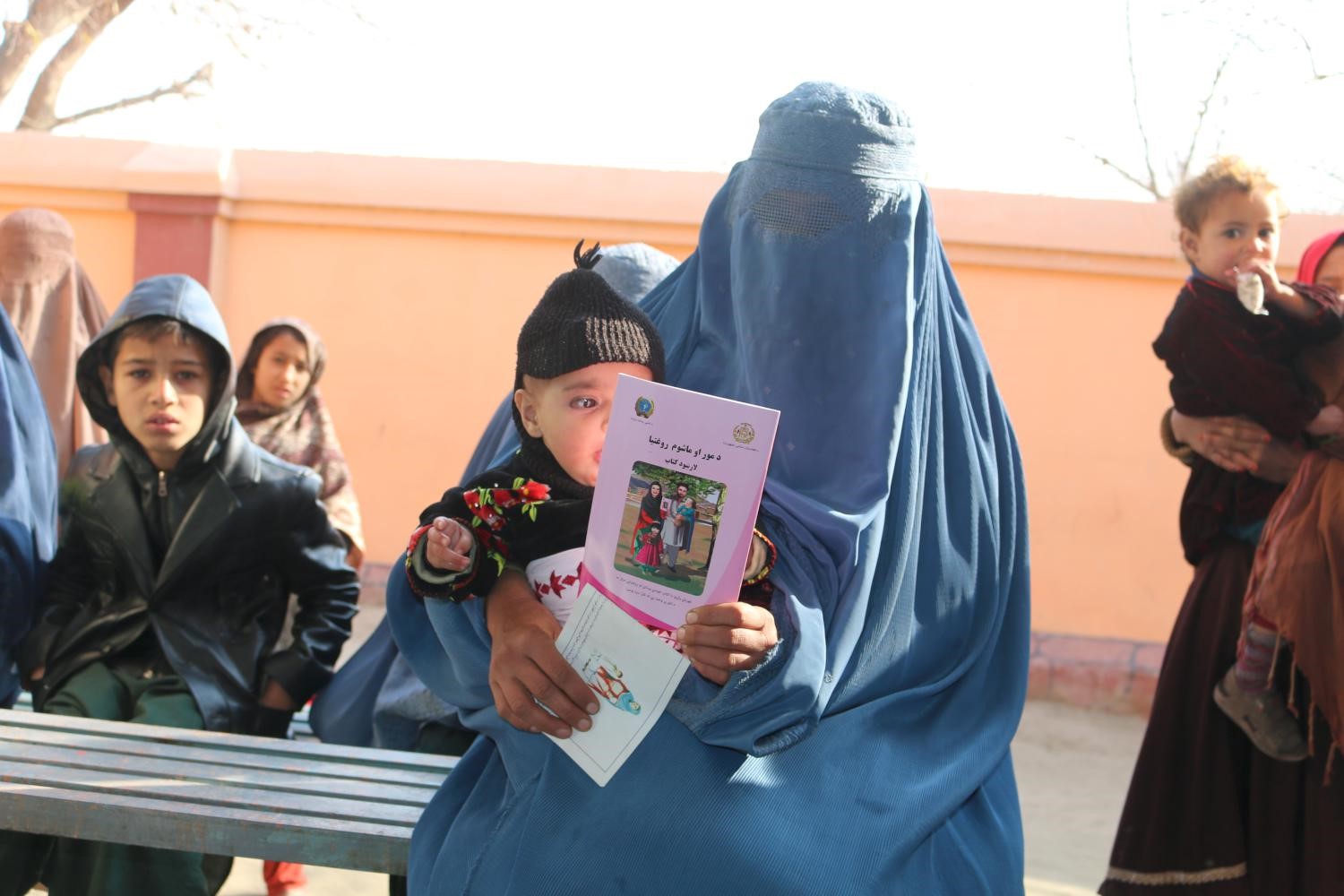
October 2018, Kabul – New mothers in Mir Bacha Kot district in Kabul have been receiving a new tool to plan their pregnancy and protect their newborn babies. Their lives are made easier by the new maternal and child health home-based handbook for Afghanistan. More than 10 000 of the handbooks were distributed when it was introduced in the district in June 2017.
In 2015, WHO introduced the concept of the maternal and child health home-based handbook to Afghanistan. After presenting the concept note and the roadmap, WHO obtained principal agreement from the Ministry of Public Health to establish and jointly lead the technical working group and raise funds to develop the handbook for Afghanistan.
In 2016, the Ministry, with the support of WHO, developed the first prototype of the handbook. With generous funding from the Japan International Cooperation Agency (JICA), the Ministry of Public Health, WHO, UNICEF and partners worked together and tested it in 2 districts (Kama in Nangarhar and Mir Bacha Kot in Kabul provinces) for one year during June 2017–June 2018.
The handbook is designed as a collection of evidence-based essential health information to give pregnant women a way to keep track of their health situation and records and those of their babies. It can be used to monitor the health and growth of both mother and child before and after pregnancy, and even early childhood development.
The handbook aims to improve linkage between health care providers, women, families and communities. It provides space for trained service providers and community health workers to record the health and growth conditions of mothers and infants, including a log records of vaccinations, which serve as de facto birth certificates. They also provide information for mothers about pregnancy, delivery, parenting and birth spacing.
By compiling 8 different record cards together in one booklet, maternal and child health handbooks were well received, both by service providers and clients, in pilot districts, where retention rate of the handbook was 99.5% among families, and notable increase in the utilization of available maternal and child health services was recorded.
“The maternal and child health handbook was very well accepted by providers and families during the pilot phase. The Ministry has approved to scale up this project nationwide. JICA and UNICEF have allocated US$ 10 million for gradual implementation during next 4 years,” says Dr Paata Chikvaidze, WHO’s Reproductive, Maternal, Newborn, Child and Adolescent Health medical officer in Afghanistan, “As one of the key stakeholders, WHO has played and will continue to play an important role in providing full technical support to monitoring and evaluation of the scale up implementation. We were thrilled to have been able to introduce this handbook to Afghanistan, it is definitely a cost-effective and efficient way to promote maternal and child health in the country.”

According to 2018 United Nations estimates, Afghanistan has witnessed about a 50% reduction in maternal deaths between 1990 and 2017. Child mortality has decreased by 62%. Despite these achievements, Afghan mothers’ and children’s mortality remains among the highest in the Region. The introduction of the handbook is vital at this time and will play a role in reduction of maternal and newborn deaths in Afghanistan.
Find out more about WHO Afghanistan’s work on improving Reproductive, Maternal, Newborn, Child and Adolescent Health








